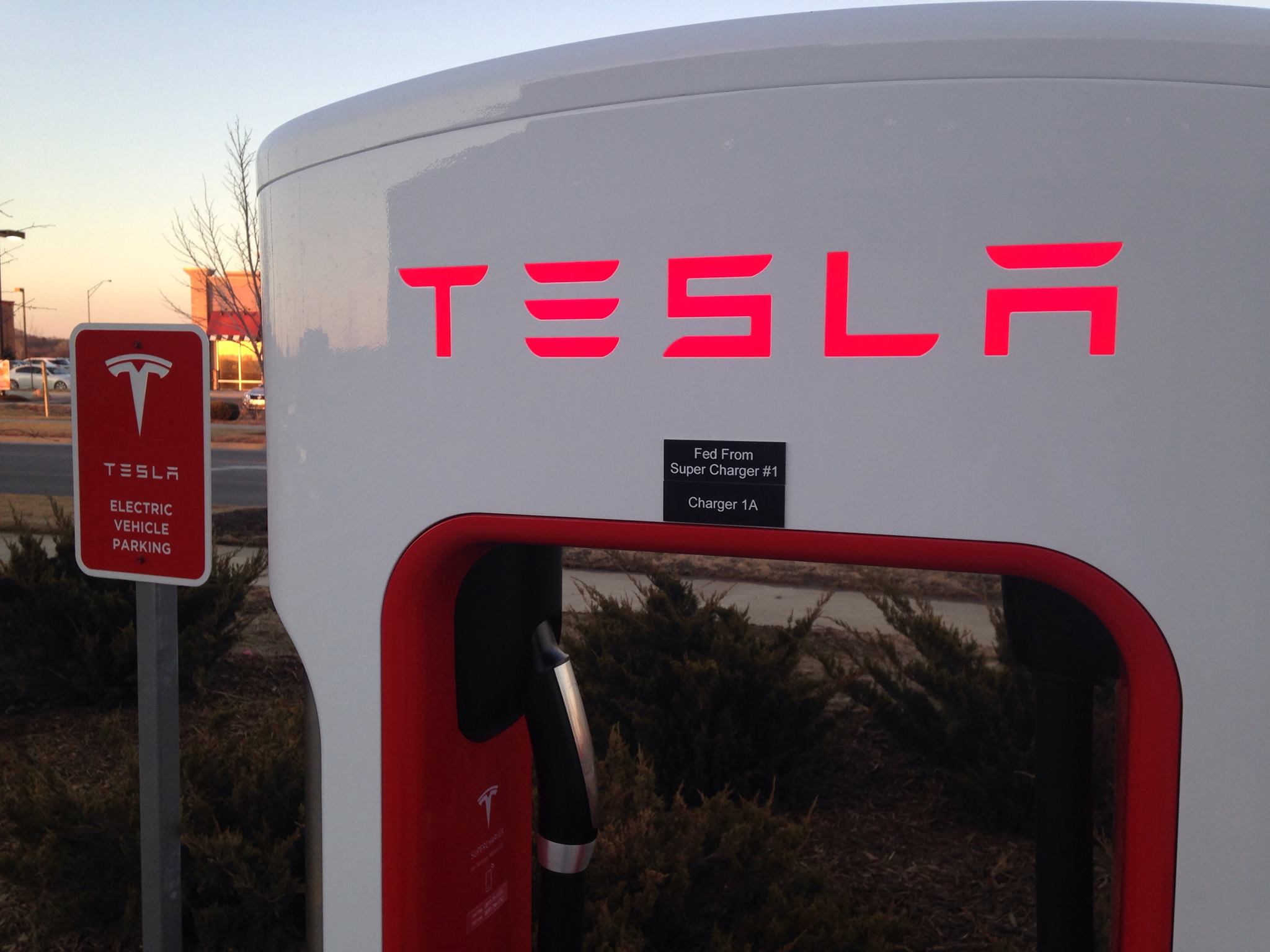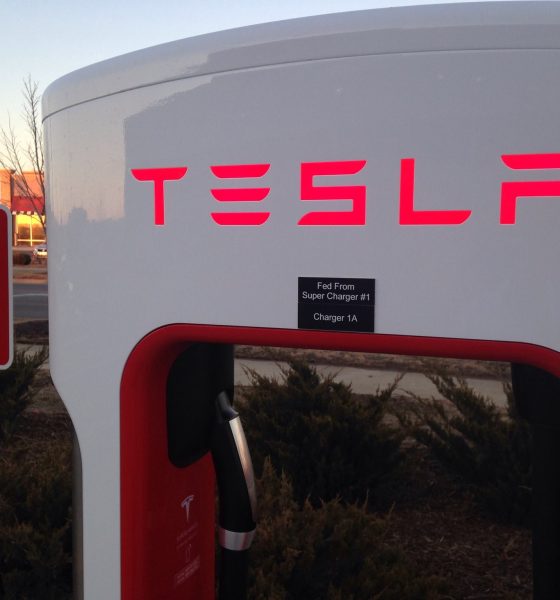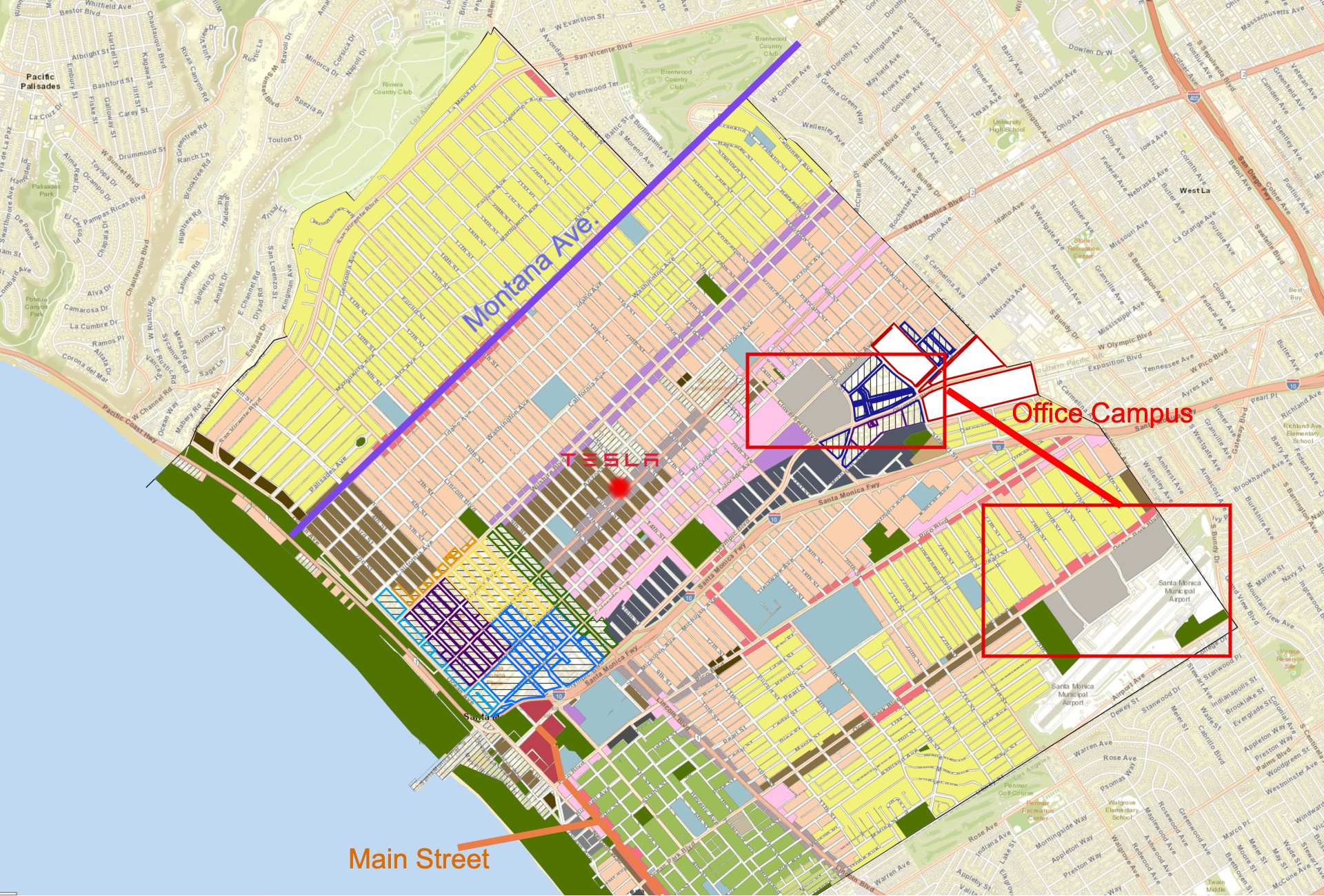

News
Tesla’s 62-stall Supercharger project in Santa Monica gains new momentum
Tesla’s 62-stall V3 Supercharger project will be a topic of discussion at this evening’s Santa Monica City Council meeting. The site of 1401 and 1421-1425 Santa Monica Boulevard was originally the planned location of Tesla’s largest V3 Supercharging station in the world. However, an Emergency Interim Zone Ordinance delayed the project. A Santa Monica City Council agenda for the March 30th meeting shows there could be a reconsideration in the Emergency Ordinance for the two lots where Tesla planned to install 62 of its fastest electric car chargers. The ordinance temporarily reserved the area for affordable housing.
On March 4th, the Santa Monica City Council chose to approve the 62-stall Tesla Supercharging station. Just days later, the City Council included the two lots that Tesla had chosen in an Emergency Interim Zoning Ordinance that reserved the land for condos and apartments. It didn’t scrap the project completely, but it would delay the Supercharging facility for a minimum of 45 days and could be extended to two years. The March 9th meeting effectively reserved unoccupied lots for prospective housing development. Tesla’s lot fit the bill, and the project lost its momentum.
Tesla’s largest V3 Supercharger facility is coming to Santa Monica
Now, revisions have been made to the Santa Monica City Council’s plan, and new areas are being considered for the affordable housing push. According to the Agenda available on the Santa Monica City Council website, the updates will be discussed at tonight’s meeting.
Instead of having housing be introduced in previously chosen areas, the City Council is now considering new regions of Santa Monica. In particular, regions that have not been used for affordable housing in the past are being considered heavily. This bodes well for Tesla’s Supercharger project on Santa Monica Boulevard because some of the listed areas in the Update show that housing could be pushed further north, several blocks away from the planned area for the V3 Supercharger lot.
The Update says:
“In order to take steps towards addressing Santa Monica’s past history of housing segregation, the Commission supported introducing housing potential, particularly affordable housing, in areas that have historically not accommodated housing, such as Montana Avenue, the Office Campus zone, and Main Street, especially on city-owned properties such as surface parking lots.”
Montana Avenue runs nearly a mile north of Santa Monica Boulevard, just south of the wealthy Brentwood neighborhood. Main Street runs along the coastline of Santa Monica and is perpendicular to Santa Monica Boulevard. The Office Campus Zone is located in several different areas, and all are several miles East of Tesla’s proposed Supercharger location.
The highlighted areas are being considered for Affordable Housing locations. Tesla’s planned V3 Supercharger location is denoted by the Tesla logo and red dot. (Map: Santa Monica Community Development Department)
The City Council was also not supportive of introducing new housing potential in the Industrial Conservation Zone. This is denoted by the dark grey areas located about two blocks south of the planned Supercharger project. Several concerns, including historic racial inequities, existing overconcentration of affordable housing in proximity to the area, and “the need to ensure the City’s economic sustainability by retaining former industrial properties for businesses” make the area ideal for market-rate housing, but not affordable housing. Because of the Supercharger location’s proximity to the area, this bodes well for Tesla’s project, as affordable housing is already available in plentiful amounts and the City Council is more interested in moving housing opportunities to the highlighted areas.
The Update does mention that the “Commission was supportive of increasing housing potential on vacant parking lots associated with commercial uses,” but there are plenty of lots that fit those specifications in Santa Monica.
The Santa Monica City Council will hold a meeting tonight at 5:30 PM PST to discuss the new recommendations. The meeting could bring new momentum to Tesla’s Santa Monica Supercharger project if the area it has chosen is exempt from the Emergency Interim Zoning Ordinance.
The Update to the Santa Monica City Council’s Housing Recommendations is available below.
Santa Monica City Council Update by Joey Klender on Scribd

Elon Musk
Elon Musk just said some crazy stuff about the Tesla Roadster

Elon Musk appeared on the Moonshots podcast with Peter Diamandis today to discuss AGI, U.S. vs. China, Tesla, and some other interesting topics, but there was some discussion about the upcoming unveiling of the Roadster, the company’s electric supercar that will arrive several years after it was initially slated for release.
Musk made some pretty amazing claims about the Roadster; we already know it is supposed to be lightning-fast and could even hover, if Tesla gets everything to happen the way it wants to. However, the car has some pretty crazy capabilities, some of which have not even been revealed.
On the podcast, Musk said:
“This is not a…safety is not the main goal. If you buy a Ferrari, safety is not the number one goal. I say, if safety is your number one goal, do not buy the Roadster…We’ll aspire not to kill anyone in this car. It’ll be the best of the last of the human-driven cars. The best of the last.”
🚨 Elon on the Roadster unveiling, scheduled for April 1:
— TESLARATI (@Teslarati) January 6, 2026
Musk makes a good point: people who buy expensive sports cars with ridiculous top speeds and acceleration rates do not buy them to be safe. They hope they are safe in case of an emergency or crash, but safety is not at the forefront of their thoughts, because nobody buys a car thinking they’ll crash it.
The Roadster is truly going to push the limits and capabilities of passenger vehicles; there’s no doubt about that. Tesla plans to show off the new version car for the first time on April 1, and Musk has only hinted at what is possible with it.
Musk said back in November:
“Whether it’s good or bad, it will be unforgettable. My friend Peter Thiel once reflected that the future was supposed to have flying cars, but we don’t have flying cars. I think if Peter wants a flying car, he should be able to buy one…I think it has a shot at being the most memorable product unveiling ever. [It will be unveiled] hopefully before the end of the year. You know, we need to make sure that it works. This is some crazy technology in this car. Let’s just put it this way: if you took all the James Bond cars and combined them, it’s crazier than that.”
Production is set to begin between 12 and 18 months after the unveiling, which would put the car out sometime in 2027. Hopefully, Tesla is able to stay on track with the scheduling of the Roadster; many people have been waiting a long time for it.
News
Tesla launches hiring for Robotaxi program in its twentieth country
Overall, the hiring signals Tesla’s aggressive timeline for global dominance in autonomous mobility.

Tesla has launched a hiring initiative for its Robotaxi program in its twentieth country, as the company posted two new jobs in Thailand this week.
Tesla is hiring in Bangkok and Kowloon for the Vehicle Operator position, which is related to data collection, and is the first in Thailand, but the twentieth country overall, as the company tries to expand into other markets.
🚨 BREAKING: Tesla is hiring additional full-time Vehicle Operators in Bangkok, Thailand.
Previous openings were 6-month, part-time roles. These are equivalent to AI Safety Operator roles in the U.S. pic.twitter.com/R6LzoU1bos— Tesla Yoda (@teslayoda) January 5, 2026
Tesla has had active job postings for Vehicle Operator positions in the United States, India, Israel, Taiwan, Germany, the Czech Republic, Hungary, the UK, Finland, Switzerland, Sweden, the Netherlands, Austria, Spain, Norway, Italy, and Turkey in past listings.
These postings are not all currently available, likely because the roles have been filled.
Thailand is the most recent, and broadens the company’s potential path to expanding its ride-hailing program, which is only active in the United States in Austin, Texas, and the California Bay Area, so far.
These roles typically involve data collection, which assists in improving Autopilot and Full Self-Driving operation. Tesla’s self-driving programs utilize real-world data that is accumulated and stored, observing vehicle and traffic behavior, as well as tendencies that are performed by human drivers to help increase safety and overall performance.
Overall, the hiring signals Tesla’s aggressive timeline for global dominance in autonomous mobility. Although the company has several high-profile rivals and competitors in the field, it has established itself as a main player and a leader in the development of autonomous technology, especially in the U.S., as its FSD suite is refined on almost a weekly basis.
The Full Self-Driving suite is available in seven countries and territories currently, including the U.S., Canada, China, Mexico, Puerto Rico, Australia, and New Zealand. Its biggest goal for expansion is currently the European market, where regulatory hurdles have been the main bottleneck prolonging its launch on the continent.
Tesla has performed months of testing in various European countries, including France and Spain, and does have support in some areas from various regulatory agencies. However, the company is hoping to get through this red tape and offer its suite in Europe for the first time, hopefully this year.
News
Tesla China rolls out Model Y upgrades, launches low-interest financing
These strategies are aimed at improving the ownership experience and keeping vehicle pricing competitive in the world’s largest electric vehicle market.

Tesla has rolled out minor updates to the five-seat Model Y in China, upgrading the vehicle’s center display to a higher-resolution 16-inch 2K screen. The electric vehicle maker also introduced attractive financing options, including 7-year low-interest rates, to offset the new purchase tax on EVs.
These strategies are aimed at improving the ownership experience and keeping vehicle pricing competitive in the world’s largest electric vehicle market.
Five-seat Model Y gets larger, better display
With its recent update, all three variants of the five-seat Model Y now feature an upgraded 16-inch 2K resolution center display, which replaces the vehicle’s previous 15.4-inch 1080p panel. This screen was already used in the six-seat Model Y L, and it offered improved visual clarity. Tesla China has also updated the Model Y’s headliner to black, giving the vehicle a sleeker appearance.
Prices of the five-seat Model Y remain unchanged at RMB 263,500, RMB 288,500, and RMB 313,500 for the respective trims. This update enhances the cabin experience as domestic rivals are already adopting high-resolution screens. As noted in a CNEV Post report, some domestic automakers have begun rolling out vehicles equipped with 3K-resolution displays.
New financing offers
Tesla also launched ultra-long-term financing offers for its locally produced models in China, which include the Model 3 sedan, the five-seat Model Y, and the six-seat Model Y L, through January 31, 2026. The 7-year option features an annualized fee rate as low as 0.5%, which is equivalent to 0.98% interest. This is expected to save customers up to RMB 33,479 ($4,790) compared to standard rates.
A 5-year zero-interest plan is also available, and it has been extended to the Tesla Model Y L for the first time. These incentives help offset China’s new 5% purchase tax on New Energy Vehicles (NEVs) in 2026-2027. Some of Tesla’s rivals in China have announced in recent months that they would be covering the purchase tax owed by buyers early this year.








